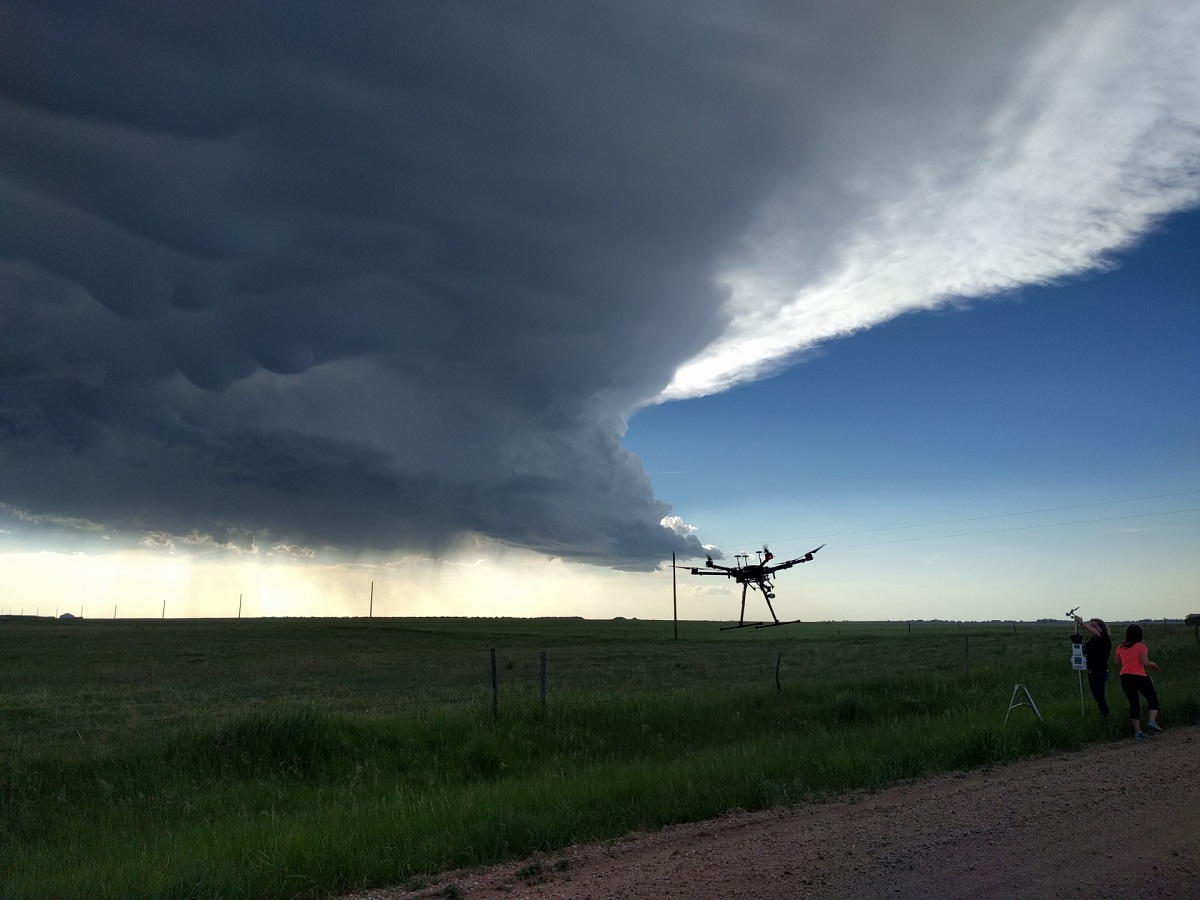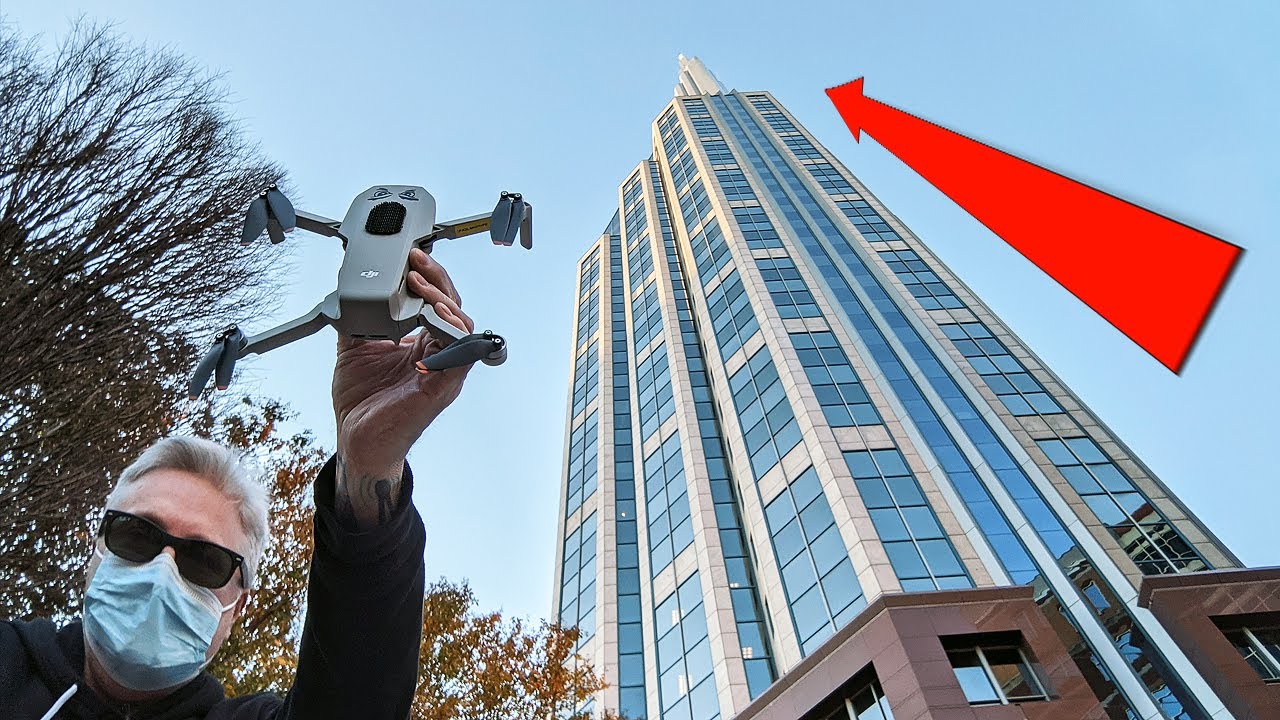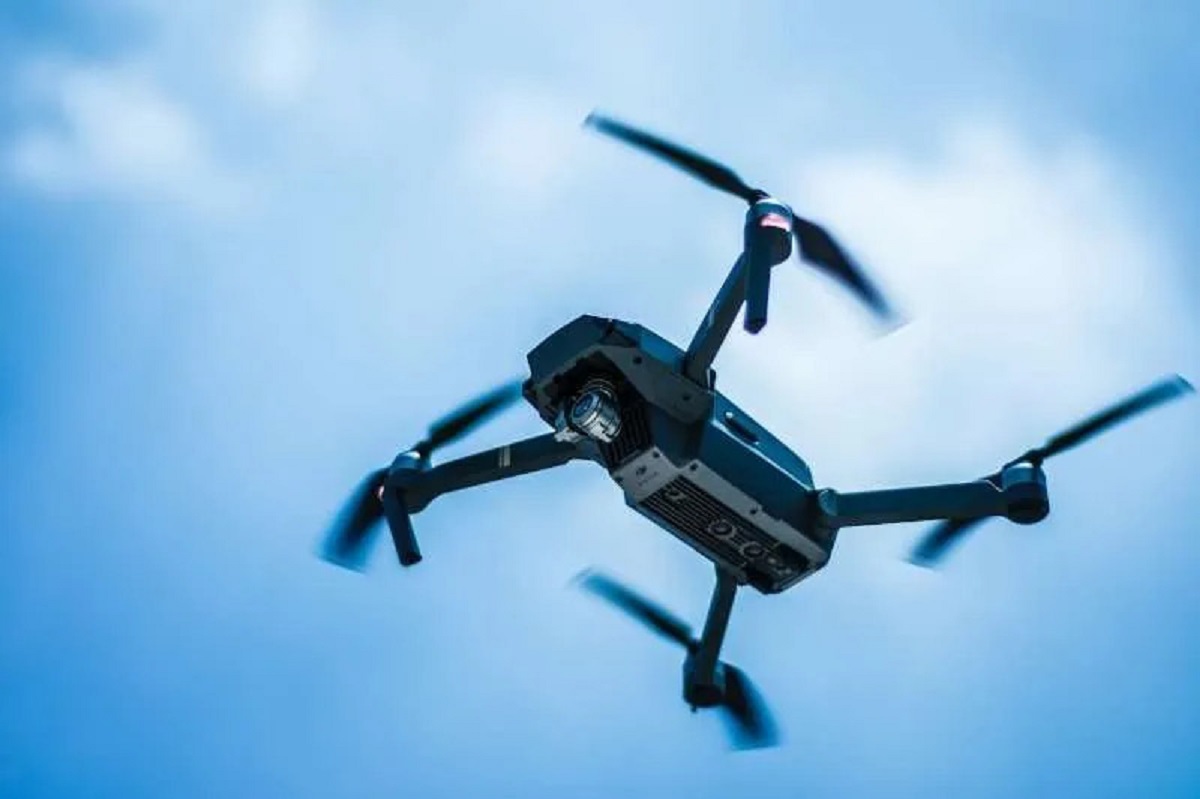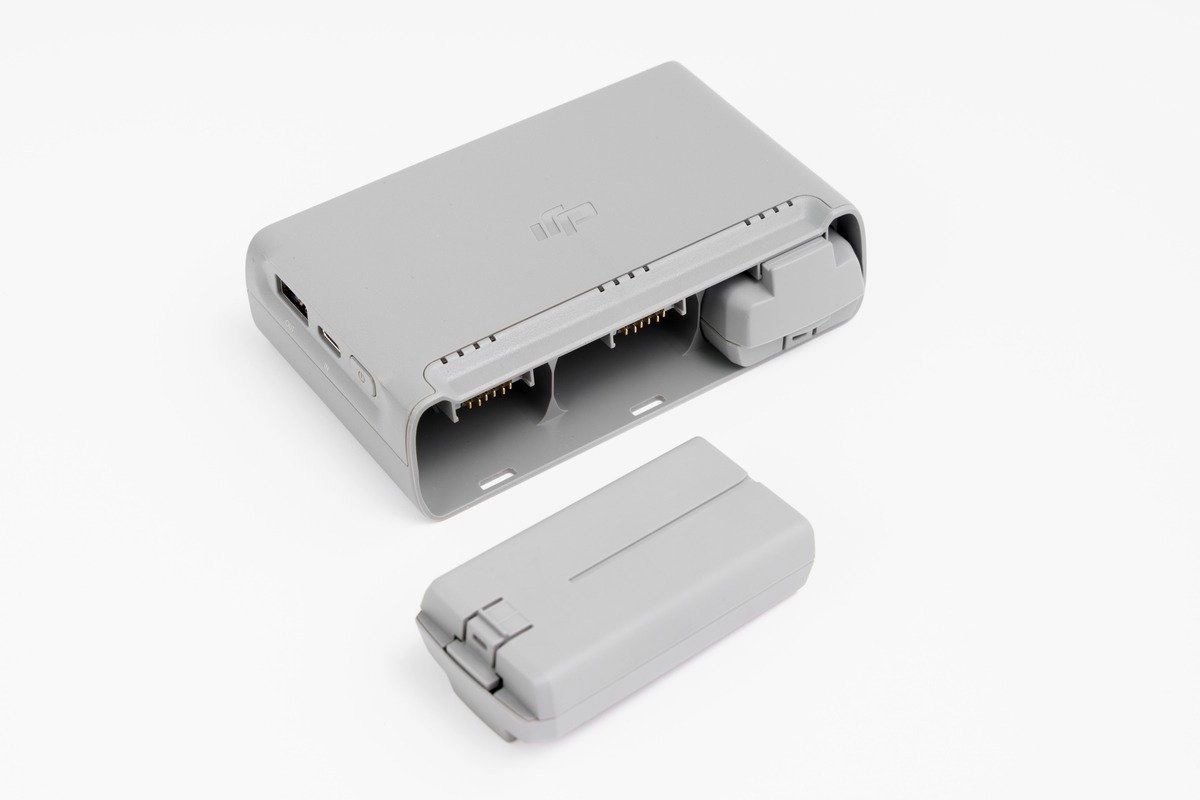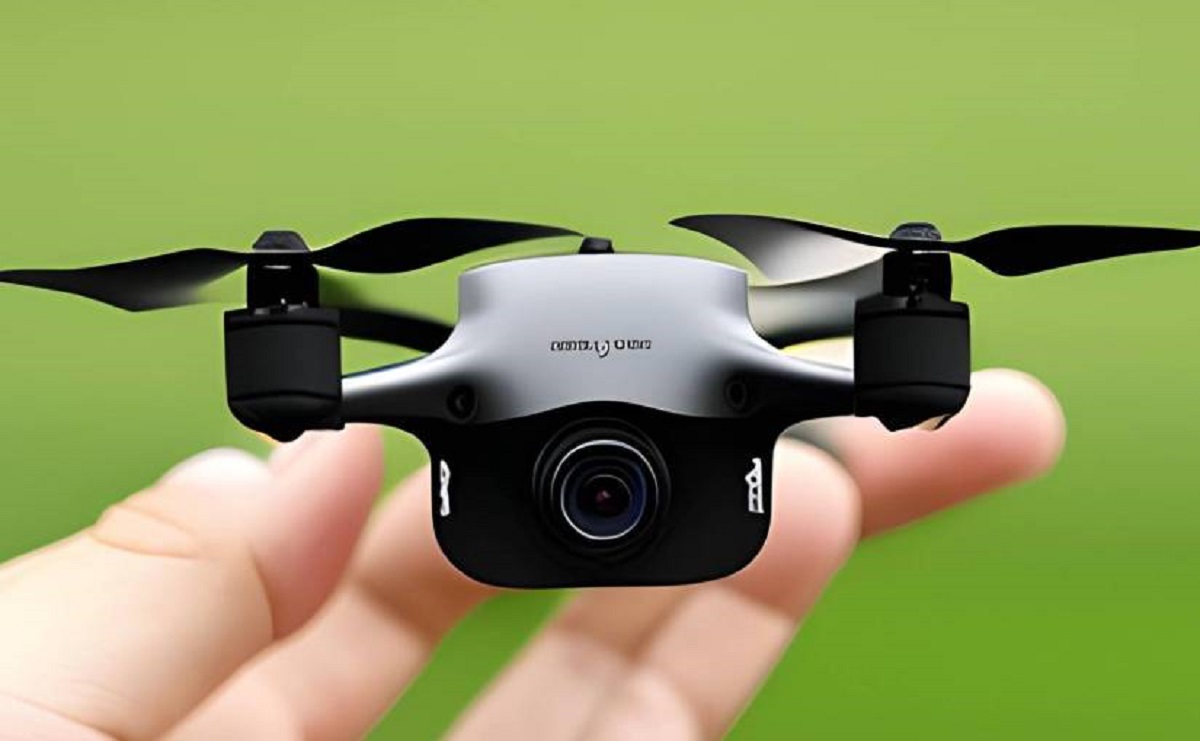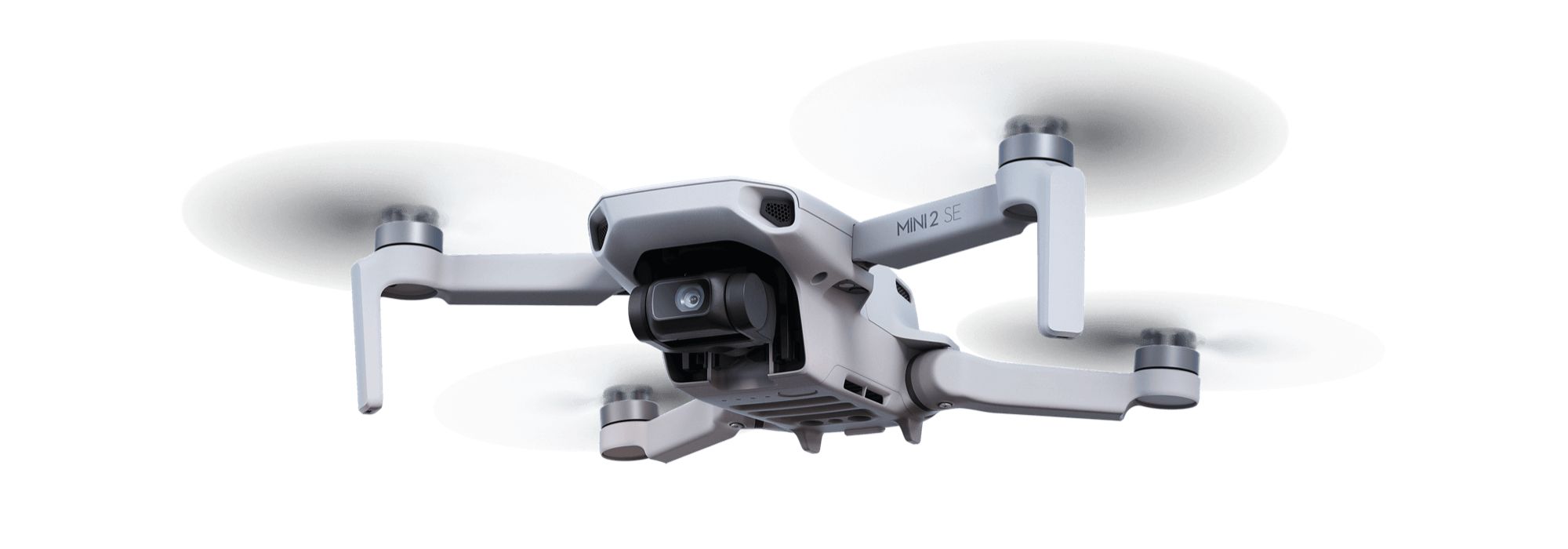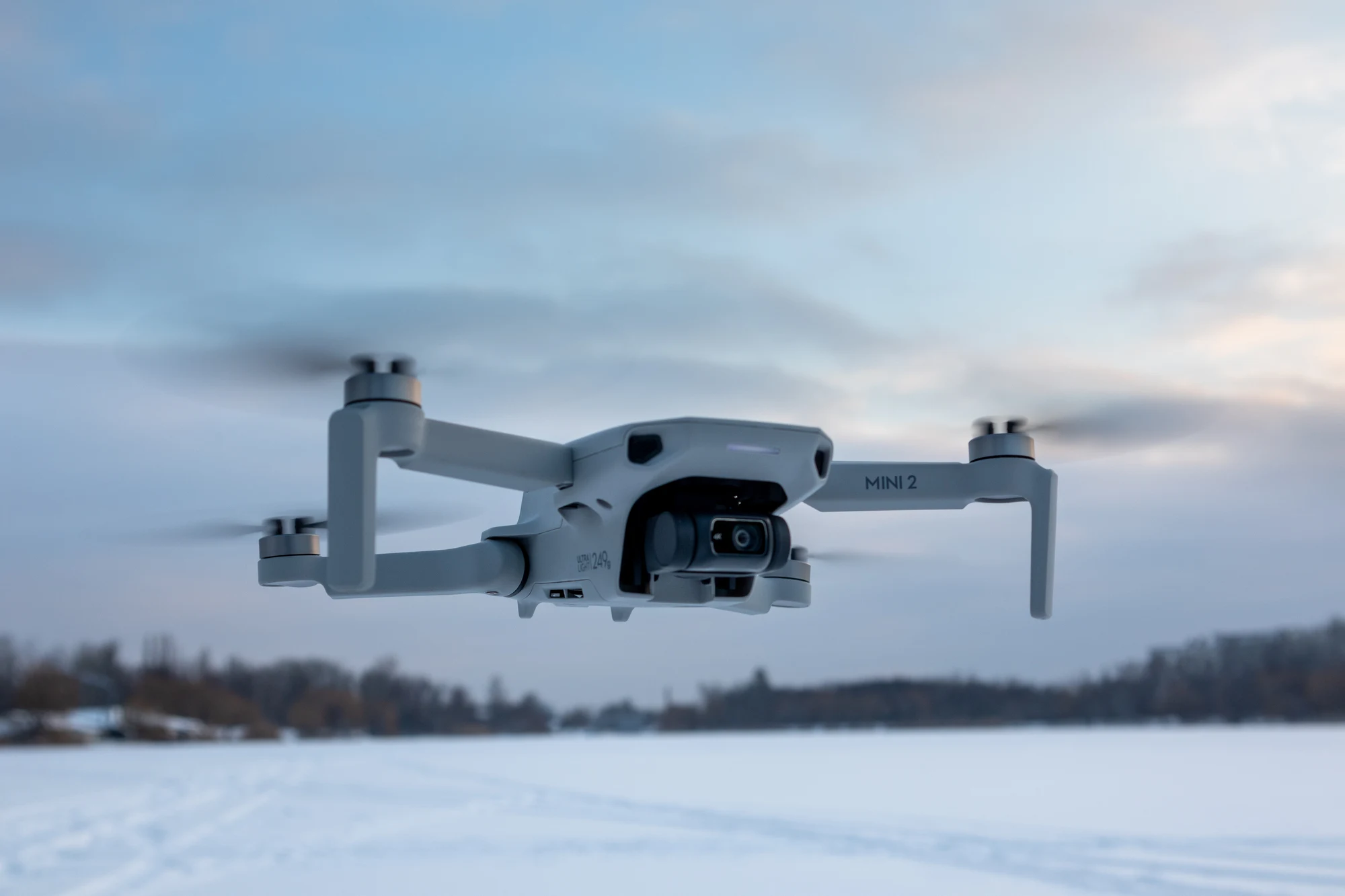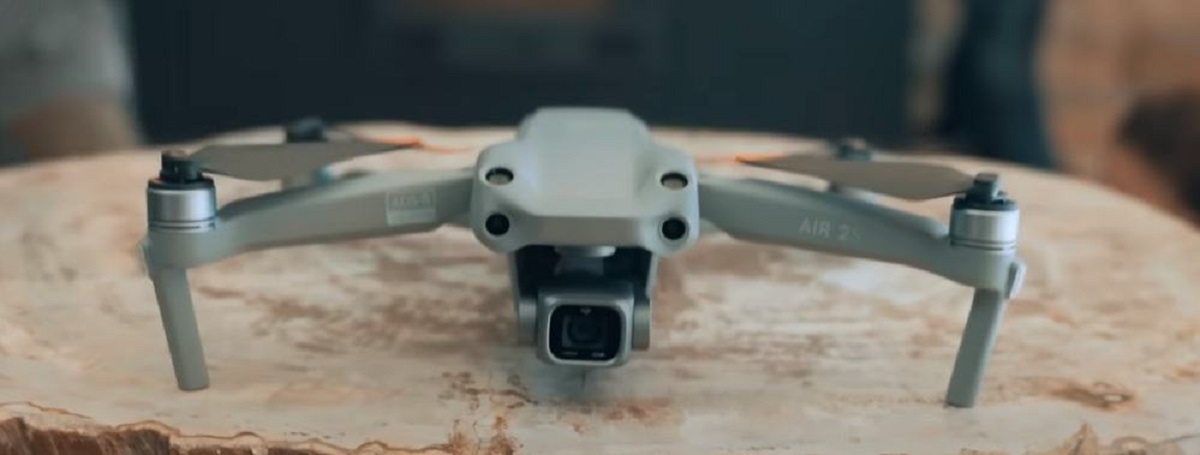Introduction
Flying a drone can be an exhilarating experience, allowing you to capture stunning aerial footage and explore the world from a unique perspective. However, when it comes to flying in windy conditions, things can become challenging and even risky. Knowing the limitations and taking necessary precautions is crucial to ensure the safety of your drone and those around you.
When determining if it’s too windy to fly a drone, you need to consider several factors such as wind speed, gusts, and the capabilities of your drone. Wind can significantly impact the stability and control of your drone, posing a potential risk for accidents and damage.
Understanding the effects of wind on drones is essential for making informed decisions. In this article, we will explore the safe wind speed limits for different types of drones, discuss precautionary measures you should take, and provide valuable tips for flying a drone in moderate wind conditions.
As an experienced drone pilot, you’re likely aware that specific guidelines and regulations are in place to ensure safe and responsible drone operation. While these regulations may vary depending on your location, being mindful of them is crucial, especially when flying in challenging weather conditions like high winds.
So, join us as we delve into the world of flying drones in windy conditions, equip ourselves with knowledge and techniques, and discover when it’s safe to take flight and when it’s best to keep our drones grounded.
Factors to Consider When Flying a Drone in Windy Conditions
When it comes to flying a drone in windy conditions, several crucial factors need to be considered to ensure a safe and successful flight. Ignoring these factors can result in accidents, damage to your drone, or even injury to yourself or others. Let’s explore some of the key factors:
- Wind Speed: The wind speed is one of the most critical factors to consider before flying a drone. Strong winds can make it challenging to control and stabilize the drone, increasing the risk of crashes. It’s essential to check the wind speed forecast for your location and ensure it falls within safe limits for your drone’s capabilities.
- Gusts: Wind gusts are sudden bursts of strong wind that can have a significant impact on your drone’s stability. They can cause rapid changes in altitude and affect the drone’s flight path. Pay attention to the forecasted gusts and be prepared for sudden changes in wind direction and speed.
- Drone Specifications: Each drone has its own set of specifications and limitations when it comes to wind conditions. Manufacturers provide recommendations for the maximum wind speed that their drones can handle. It’s important to familiarize yourself with your drone’s specifications and adhere to them to ensure safe and stable flight.
- Payload and Accessories: The addition of payload, such as a camera or other equipment, can affect the drone’s performance in windy conditions. The extra weight may make it more susceptible to wind disturbances. Similarly, accessories like propeller guards or landing gear extensions can increase wind resistance. Take into account the impact of these additions on your drone’s stability.
- Pilot Skill Level: Even with the most advanced drones, the skill and experience of the pilot play a significant role in flying safely in windy conditions. It’s crucial to have a good understanding of drone flight dynamics and practice controlling your drone in different wind scenarios before attempting to fly in more challenging conditions.
- Obstacles and Surroundings: Consider the environment in which you’ll be flying. Are there any tall buildings, trees, or other structures that could cause wind turbulence? Flying near obstacles can create unpredictable wind patterns that may affect your drone’s stability. Choose an open and clear area for flying in windy conditions to minimize potential risks.
By taking these factors into account, you can make informed decisions regarding whether to fly your drone in windy conditions or wait for calmer weather. Remember, safety should always be the top priority when operating a drone, and understanding these factors helps you mitigate risks and ensure a successful flight.
Understanding Wind Speed and Its Effects on Drones
Wind speed plays a significant role in determining the feasibility of flying a drone. Knowing how wind affects drones and their performance is essential for making informed decisions and ensuring safe flight operations. Let’s delve deeper into the relationship between wind speed and drones:
Airborne Stability: Wind affects the stability of drones by creating turbulent air currents. As wind speed increases, drones experience greater resistance and are more susceptible to being pushed off course. The stability of your drone in windy conditions depends on its design, weight, and aerodynamic features.
Control and Maneuverability: Wind can make it difficult to control and maneuver your drone effectively. Strong crosswinds can push your drone sideways and interfere with your ability to maintain a desired path or execute precise maneuvers. The responsiveness and agility of your drone may diminish as wind speed increases.
Battery Life: Flying in windy conditions requires your drone to work harder to maintain stability and fight against the wind. This increased workload puts additional strain on the battery, reducing its overall lifespan. Expect a shorter flight time when operating in windy conditions as the drone consumes more power to compensate for the wind resistance.
Stability of Captured Footage: When flying a drone equipped with a camera, wind can affect the stability and quality of the captured footage. Strong gusts and turbulence can introduce unwanted shaking and vibrations, resulting in shaky or blurry videos and photos. To ensure smooth footage, it’s crucial to fly in relatively calm wind conditions.
Safety Concerns: Windy conditions pose safety risks for both the drone operator and those in the surrounding area. In high winds, drones may become uncontrollable, leading to crashes, damages, or injuries. The wind can also carry the drone beyond your control range or make it difficult to perform emergency procedures if needed.
Understanding wind speed and its effects on drones allows you to assess the risks and make informed decisions about when it’s safe to fly. Monitoring weather conditions and wind speeds is crucial before each flight. By staying within the recommended wind speed limits for your specific drone model, you can ensure the safety of your drone, protect valuable equipment, and prevent potential accidents.
Safe Wind Speed Limits for Different Types of Drones
Every drone model has specific wind speed limits prescribed by the manufacturer. These limits are determined based on the drone’s design, size, weight, and overall aerodynamic capabilities. It’s crucial to know and adhere to the recommended wind speed limits for your drone to ensure safe flight operations. Let’s explore some general guidelines for different types of drones:
- Consumer/Entry-Level Drones: Consumer drones, such as those commonly used for recreational purposes, generally have lower wind speed limits. These drones are lightweight and often lack advanced stabilization systems. As a general rule, it’s recommended to fly consumer drones in wind speeds below 10-15 mph (16-24 km/h) to maintain stability and control.
- Prosumer/Mid-Range Drones: Prosumer drones, which are more advanced and feature higher-end specifications, have a greater tolerance for wind conditions. They typically offer improved stabilization systems and stronger motors. These drones can handle wind speeds of around 20-25 mph (32-40 km/h) while still maintaining stable flight.
- Professional/Commercial Drones: Professional and commercial drones are designed to withstand more challenging weather conditions. Equipped with advanced stabilization systems, robust motors, and often larger sizes, these drones can tolerate wind speeds ranging from 25-35 mph (40-56 km/h). However, it’s important to note that even professional drones have their limits, and it’s always best to err on the side of caution when it comes to wind speed.
It’s worth noting that these wind speed limits are general guidelines, and individual drone models may have specific requirements. Always refer to the manufacturer’s instructions and documentation for precise wind speed limits for your particular drone model.
Additionally, keep in mind that wind gusts can have a significant impact on your drone’s performance, stability, and control. Even if the average wind speed remains within the recommended limit, sudden gusts exceeding the limit can pose risks. Therefore, it’s essential to monitor wind gusts and factor them into your decision-making process before taking flight.
Remember, exceeding the safe wind speed limits for your drone can result in instability, reduced control, and potential accidents or damage. Prioritizing safety and following manufacturer guidelines ensure a more enjoyable and risk-free flying experience.
Taking Precautionary Measures to Fly a Drone in Windy Conditions
Flying a drone in windy conditions requires extra caution and preparation to ensure the safety of your equipment and those around you. By taking some precautionary measures, you can mitigate risks and increase the chances of a successful flight. Here are some essential steps to consider:
- Monitor Weather Conditions: Before flying, carefully monitor weather conditions, especially wind speed and gusts. Use reputable weather sources or smartphone apps to get accurate and up-to-date information. Avoid flying in high winds or gusty conditions that may exceed your drone’s safe wind speed limits.
- Choose the Right Location: Select a location that offers ample space and minimal obstacles. Avoid flying near tall buildings, trees, or structures that can create turbulence and unpredictable wind patterns. An open area with minimal obstacles provides better chances of maintaining stability in windy conditions.
- Perform Pre-flight Inspections: Conduct thorough pre-flight inspections of your drone, including the propellers, battery, and overall structure. Ensure that all components are securely connected and functioning correctly. Wind can put additional stress on the drone, so it’s important to ensure that it is in optimal condition before takeoff.
- Check Drone Settings: Adjust your drone’s settings to optimize stability in windy conditions. Activate the drone’s stability mode or enable GPS-assisted flight if available. These settings can enhance the drone’s ability to counteract gusts and maintain stability during flight.
- Use Propeller Guards: Consider using propeller guards to add an extra layer of protection to your drone. Propeller guards can help minimize damage in case of a crash or contact with obstacles. Additionally, they can slightly improve stability in windy conditions by reducing the effects of wind on the propellers.
- Be Mindful of Battery Life: Windy conditions can place greater demand on your drone’s battery. Take this into account when planning your flight, as it may necessitate shorter flight times. Be aware of the remaining battery percentage throughout the flight and have a safe landing area in case the battery drains faster than anticipated.
- Maintain Line of Sight: Keep your drone within your line of sight at all times, especially when flying in windy conditions. Losing sight of the drone can compromise your ability to anticipate and react to changes in wind direction or speed. Maintaining visual contact is crucial for ensuring safe and controlled flight.
- Practice Controlling in Moderate Winds: If you’re new to flying drones in windy conditions, it’s advisable to practice in moderate winds before attempting more challenging conditions. Gradually increase your exposure to stronger winds and gain confidence in controlling the drone effectively.
By taking these precautionary measures, you can enhance the safety and stability of your drone during windy flights. Remember, it’s always better to err on the side of caution and prioritize the well-being of your equipment and others around you.
Tips for Flying a Drone in Moderate Wind Speeds
Flying a drone in moderate wind conditions requires skill and careful consideration to ensure a smooth and stable flight. With the right techniques and strategies, you can navigate the challenges of wind and capture amazing aerial footage. Here are some useful tips for flying your drone in moderate wind speeds:
- Check Wind Direction: Determine the direction from where the wind is coming. This will help you plan your flight path accordingly and adjust your drone’s heading to compensate for the wind’s effect.
- Fly Against the Wind: When flying in moderate wind conditions, it’s generally best to fly against the wind on the outbound leg. This way, your drone will face less resistance and be more stable. On the return leg, flying with the wind can help conserve battery power and maintain control.
- Adjust Flight Speed: Reduce your drone’s speed when flying in moderate winds. Slowing down can give you better control and improve stability. Avoid sudden acceleration or deceleration, as this can create instability and make it more challenging to maneuver in changing wind conditions.
- Maintain a Steady Altitude: In windy conditions, maintaining a steady altitude is crucial for stability and smooth footage. Be proactive in adjusting the throttle to counteract any vertical displacement caused by gusts or turbulence.
- Use Smooth and Gentle Movements: Ensure your controls are precise and smooth. Use gentle and gradual movements instead of abrupt or jerky inputs. This helps mitigate the effects of wind turbulence and promotes a more stable flight.
- Be Mindful of Battery Consumption: Flying in moderate wind conditions can drain your drone’s battery faster due to increased power requirements. Monitor the battery level closely and plan your flight duration accordingly. Consider reducing the flight time to allow for safe landing with sufficient battery power remaining.
- Keep an Eye on Wind Gusts: Pay attention to any sudden changes in wind speed or gusts. Gusts can catch your drone off guard and affect stability. Be prepared to make quick adjustments in throttle and control inputs to maintain stability during gusts.
- Consider Attaching Landing Gear: Adding landing gear to your drone can improve stability during takeoff and landing in windy conditions. It provides additional support and reduces the likelihood of your drone tipping over or being affected by ground-level turbulence.
- Practice and Experiment: Familiarize yourself with your drone’s behavior in moderate winds through practice. Experiment with different flight techniques, such as banking turns or adjusting the drone’s attitude, to counteract wind effects. By gaining experience, you’ll become more confident in flying in various wind conditions.
- Be Prepared to Abort the Flight: If wind conditions worsen or become unpredictable, be prepared to abort the flight and bring your drone back to a safe landing spot. Your safety and the safety of others should always be the top priority.
Flying a drone in moderate wind speeds can be challenging but also rewarding. By implementing these tips, you can improve your control, stability, and overall flying experience in windy conditions. Remember to always prioritize safety and follow local regulations and guidelines when flying your drone.
Signs That It’s Too Windy to Fly a Drone
Knowing when it’s too windy to fly a drone is crucial for the safety of your drone and those around you. Flying in excessively windy conditions can lead to unstable flight, loss of control, and potential accidents. Here are some signs that indicate it’s too windy to fly a drone:
- Uncontrollable Flight: If you struggle to maintain control over your drone despite your best efforts, it may be a sign that the wind is too strong. If you find it difficult to keep the drone steady and it keeps drifting with the wind, it’s best to abort the flight.
- Extreme Tilting: When wind forces are too strong, your drone may start tilting excessively in one direction. This can make it difficult to correct its position and maintain stable flight. If you notice extreme tilting that cannot be easily corrected, it’s a clear indication that the wind is too strong.
- Erratic Movements: In high winds, drones may exhibit erratic movements, sudden jerks, or unpredictable flight patterns. Erratic movements are a sign that the wind is affecting the drone’s stability and control, making it risky to continue flying.
- Struggle to Gain Altitude: If your drone struggles to gain altitude despite normal throttle input, it indicates that the wind is overpowering its ability to climb. This poses a risk, as the drone may end up descending uncontrollably or getting pushed into obstacles.
- Noise from Motors: Increased wind resistance can put a strain on your drone’s motors. If you notice that the motors are making a loud and strained noise, it suggests that the wind speed is beyond what your drone can handle safely.
- Strong Wind Gusts: If you experience frequent and strong wind gusts, it’s an indication that the wind conditions are unstable and unpredictable. Gusts can suddenly push your drone off course, making it difficult to maintain control and stability.
- Local Weather Advisories: Pay attention to local weather advisories or warnings. If there are reports of high winds or adverse weather conditions in your area, it’s best to postpone your drone flight until conditions improve.
- Unsafe Environment: Assess the surrounding environment before flying. If you notice objects being blown around, trees bending excessively, or debris being carried by the wind, it’s a clear indication that the wind is too strong for safe drone operation.
Remember, it’s important to use common sense and prioritize safety when deciding whether to fly a drone in windy conditions. If you experience any of these signs or if you have doubts about the wind’s strength, it’s better to err on the side of caution and wait for calmer weather conditions.
Consequences of Flying a Drone in High Winds
Flying a drone in high winds can have severe consequences, both for the drone itself and for those in its vicinity. Ignoring the dangers and attempting to fly in these conditions can result in a range of negative outcomes. Here are some of the potential consequences of flying a drone in high winds:
- Loss of Control: High winds can make it extremely challenging to maintain control over your drone. The powerful gusts can overpower the drone’s propulsion system and cause it to drift, making it difficult to navigate and maneuver.
- Crashes and Damages: Uncontrolled movements and loss of stability increase the risk of accidents and crashes. Flying a drone in high winds can lead to collisions with obstacles, such as trees, buildings, or power lines, potentially resulting in irreparable damage to the drone and endangering people or property.
- Loss of Visual Line of Sight: Strong winds can blow your drone off course rapidly, making it difficult to maintain visual line of sight. Losing sight of your drone can lead to a loss of control, increasing the chances of accidents and making it harder to navigate and avoid obstacles.
- Excessive Battery Drain: Flying in high winds requires your drone to work harder to maintain stability, resulting in increased power consumption. As a result, the battery will drain more quickly than usual, reducing your flight time and potentially leaving you with insufficient power to safely land the drone.
- Damaged or Lost Equipment: High winds can cause serious damage to your drone, including broken propellers, damaged motors, or detached components. It is also possible that the wind could carry the drone beyond your control range, resulting in a lost or unrecoverable drone.
- Potential Injury or Harm: Flying a drone in high winds poses a risk to yourself, as well as others in the vicinity. If the drone crashes or loses control, it may cause injury to people or animals, damage property, or disrupt other activities taking place around you.
- Legal and Regulatory Consequences: Operating a drone in high winds may violate local regulations or restrictions. It’s important to comply with legal requirements and be aware of any limitations on drone flight, especially during adverse weather conditions. Violating regulations can result in fines, penalties, or other legal consequences.
Flying a drone in high winds should be avoided to prevent accidents, damages, and potential injuries. It’s essential to prioritize safety and make responsible decisions when considering whether to fly in adverse weather conditions. Observe weather forecasts, adhere to manufacturer guidelines, and exercise caution to ensure a safe and enjoyable drone flying experience.
Conclusion
When it comes to flying a drone in windy conditions, it’s important to prioritize safety and make informed decisions. Understanding the factors that affect drone stability, such as wind speed and gusts, is crucial for determining whether it’s safe to fly. By adhering to safe wind speed limits for your specific drone model and taking precautionary measures, you can minimize risks and ensure a successful flight.
Monitoring weather conditions, choosing the right location, and conducting pre-flight inspections are essential steps in preparing for a windy drone flight. Adjusting your flight techniques and being mindful of battery life can help you navigate moderate wind speeds successfully. However, it’s crucial to recognize the signs that indicate it’s too windy to fly, such as uncontrollable flight, extreme tilting, or erratic movements.
Exposure to high winds can lead to severe consequences, including crashes, damages to your drone and equipment, and potential injury to people or property. Operating a drone in high winds may also result in legal repercussions or violations of local regulations. It’s always better to err on the side of caution and prioritize safety over capturing aerial footage.
Remember to consult your drone’s manufacturer guidelines for specific wind speed limits and recommendations. Practice controlling your drone in varying wind conditions to build your skills and confidence. By being proactive and responsible, you can enjoy the thrill of flying a drone while minimizing risks and ensuring the longevity of your equipment.







